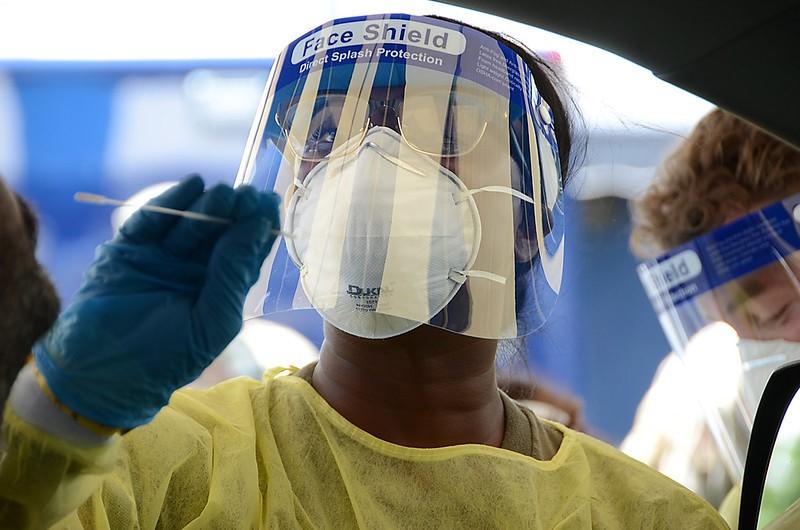Though the nation's COVID-19 activity is still at very low levels, for the second week in a row early indicators such as emergency department (ED) visits and test-positivity rates show small rises, the Centers for Disease Control and Prevention (CDC) said in its latest data updates.
Also today, the CDC updated its Omicron variant projections, showing more rises in newer versions such as EG.5 and XBB.1.16.6. And in another US development, the Biden administration today announced its pick to lead the new White House pandemic preparedness and response office.
Hints of regional differences
The main markers the CDC uses to track activity—hospitalizations and deaths—showed no rises. Hospitalizations for COVID declined 0.9% compared to a week ago. Only a few counties in Texas have moderate or high levels of COVID admissions.
Meanwhile, deaths stayed level compared to the past week. Nationally, only 0.9% of deaths over the past week were due to COVID.
Three early indicators, like last week, showed slight rises. ED visits for COVID rose 7.1% compared to the previous week, and test positivity rose 0.5%. Nationally, test positivity is at 6.3%, but the level is higher in the southern CDC region that includes Texas, the region that includes California, and in the Northeast.
Also, wastewater tracking shows a slight rise that continues, with lower levels in the Midwest than other regions of the country, according to Biobot.
Variant proportions continue to shift
In new variant projections today, the CDC reported more declines in both XBB.1.15 and XBB.1.16 over the last 2 weeks.
Meanwhile, newer variants showed rising proportions, such as EG.5, which increased from 7.7% to 11.4%. The WHO this week added EG.5, a descendant of XBB.1.9.2, as a variant under monitoring. The agency said so far there is no evidence that EG.5 is triggering any rises in cases or deaths and that it doesn't appear to cause more severe disease.
The US proportion of the XBB.1.16.6 subvariant rose from 5.4% to 9.3%, and XBB.2.3 rose from 11.9% to 13%, the CDC said.
New executive pandemic office staffs up
To ensure that the nation is better prepared to respond the next pandemic, the Biden administration is establishing a new executive level office in the White House called the Office of Pandemic Preparedness and Response Policy (OPPR).
Today, it announced that retired Major General Paul Friedrichs, MD, will serve as the office's first director and principal adviser on pandemic preparedness and response effective August 7. He is currently a special presidential assistant and senior director for global health security and biodefense at the National Security Council (NSC).
Previously, Friedrichs was joint staff surgeon at the Pentagon, where he coordinated health services, advised the Chairman of the Joint Chiefs of Staff, and was medical adviser to the Department of Defense Covid-19 Task Force.
Among the many pandemic preparedness tasks, the new OPPR will oversee the development of next-generation countermeasures, including new vaccines and treatments for COVID.



















